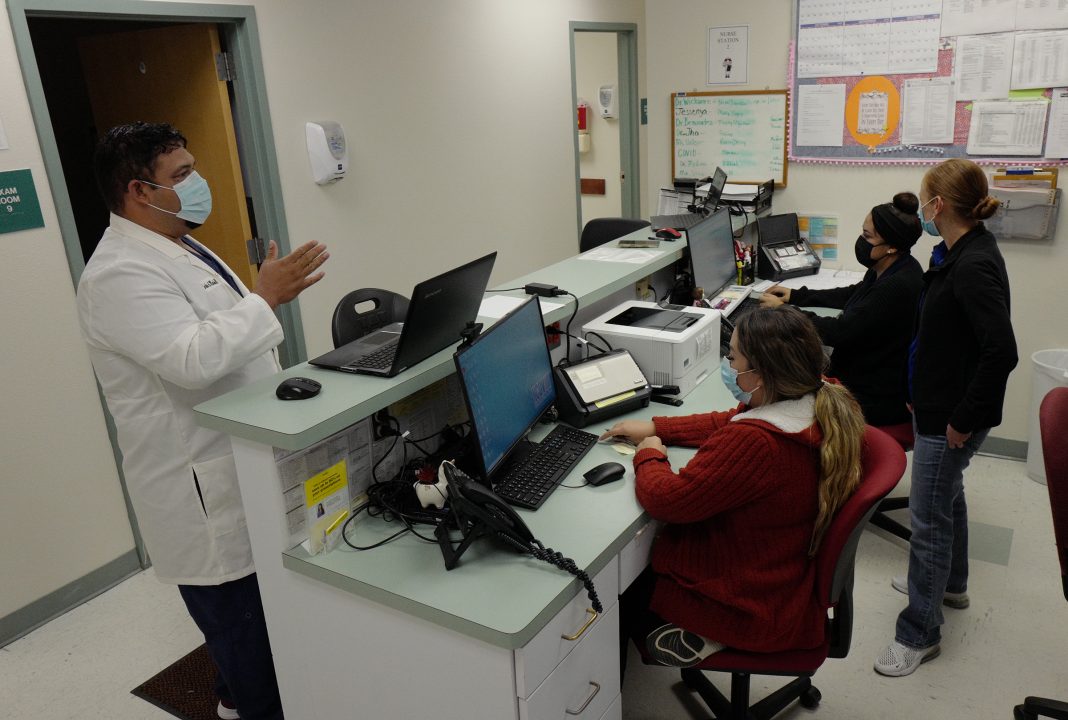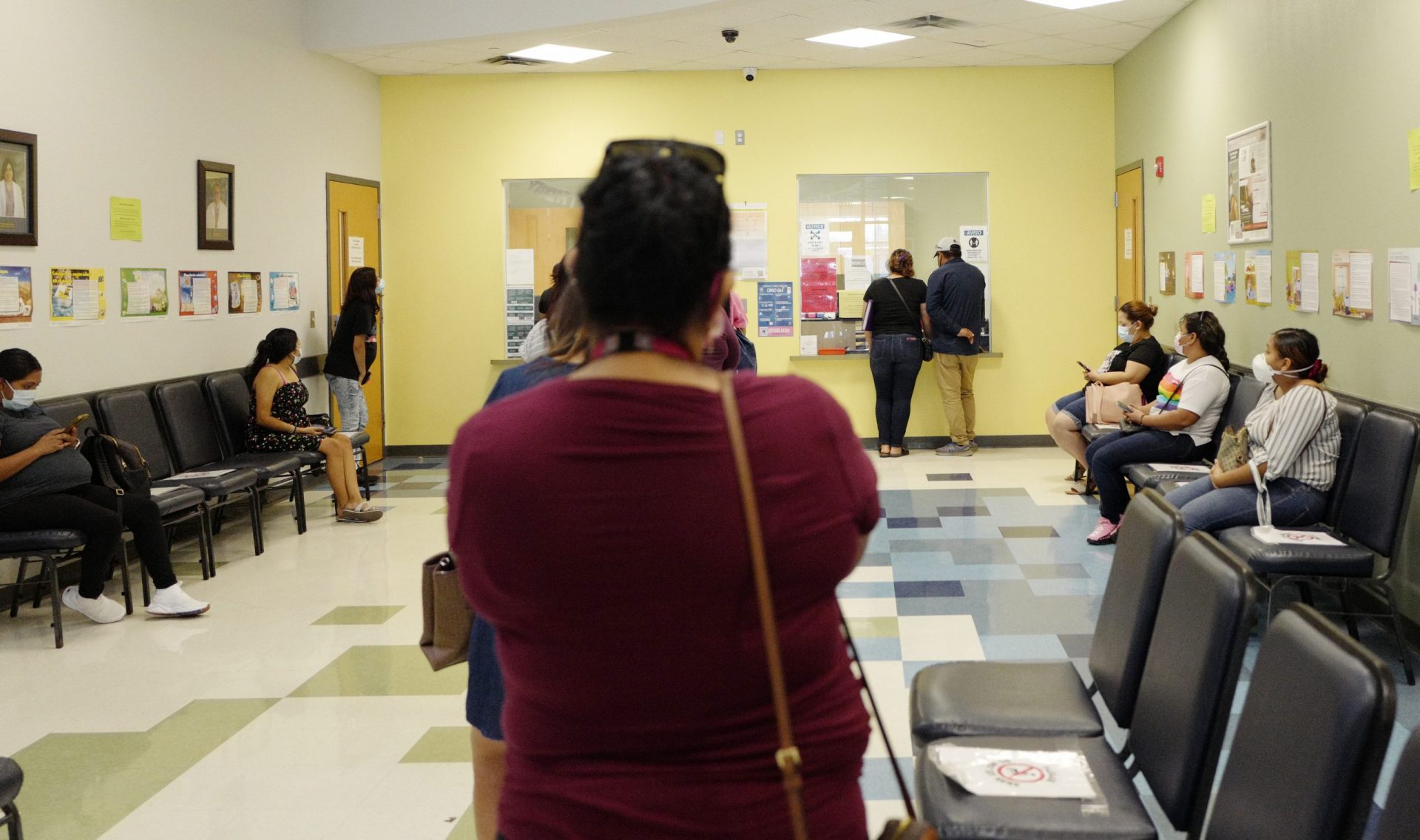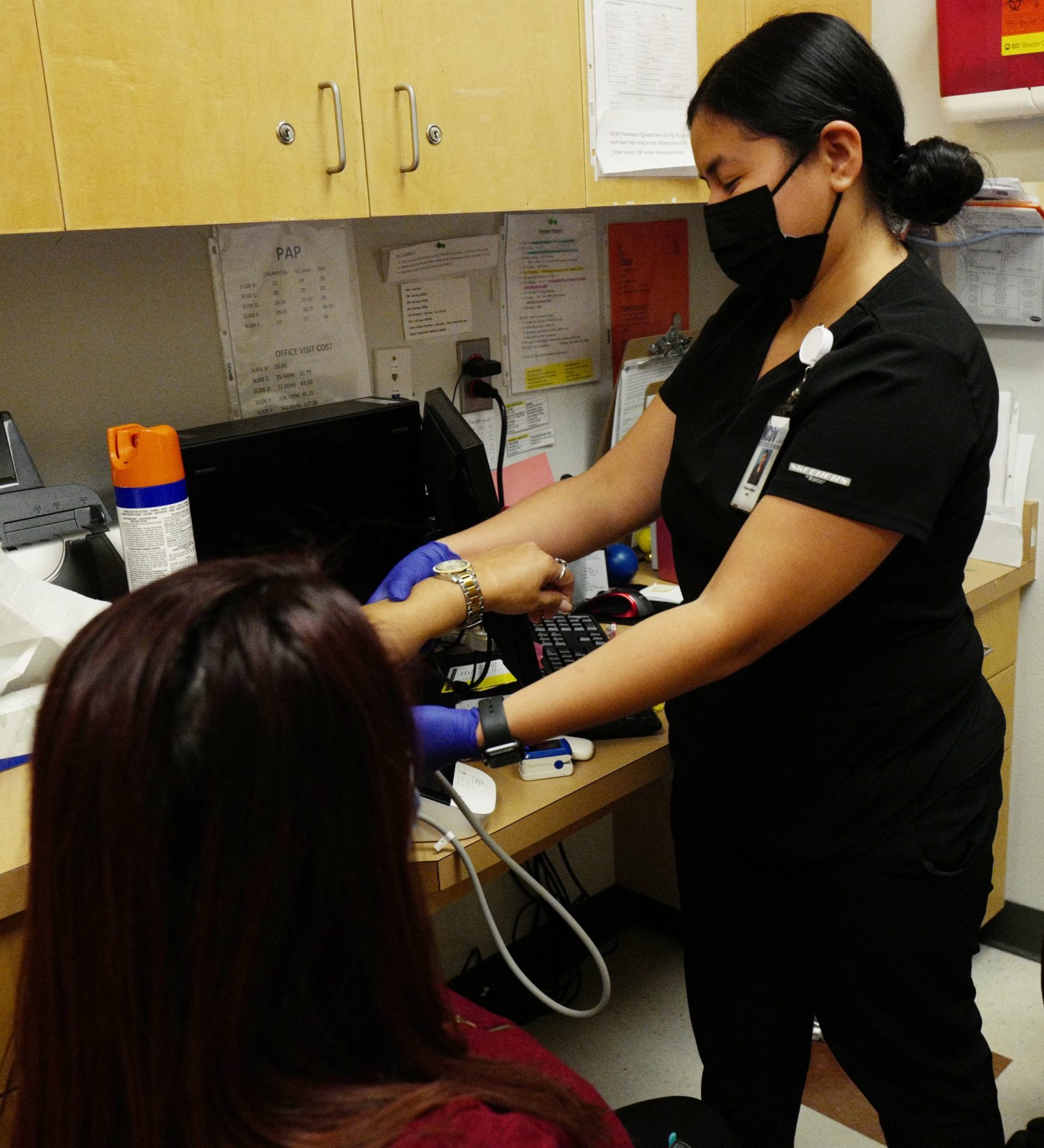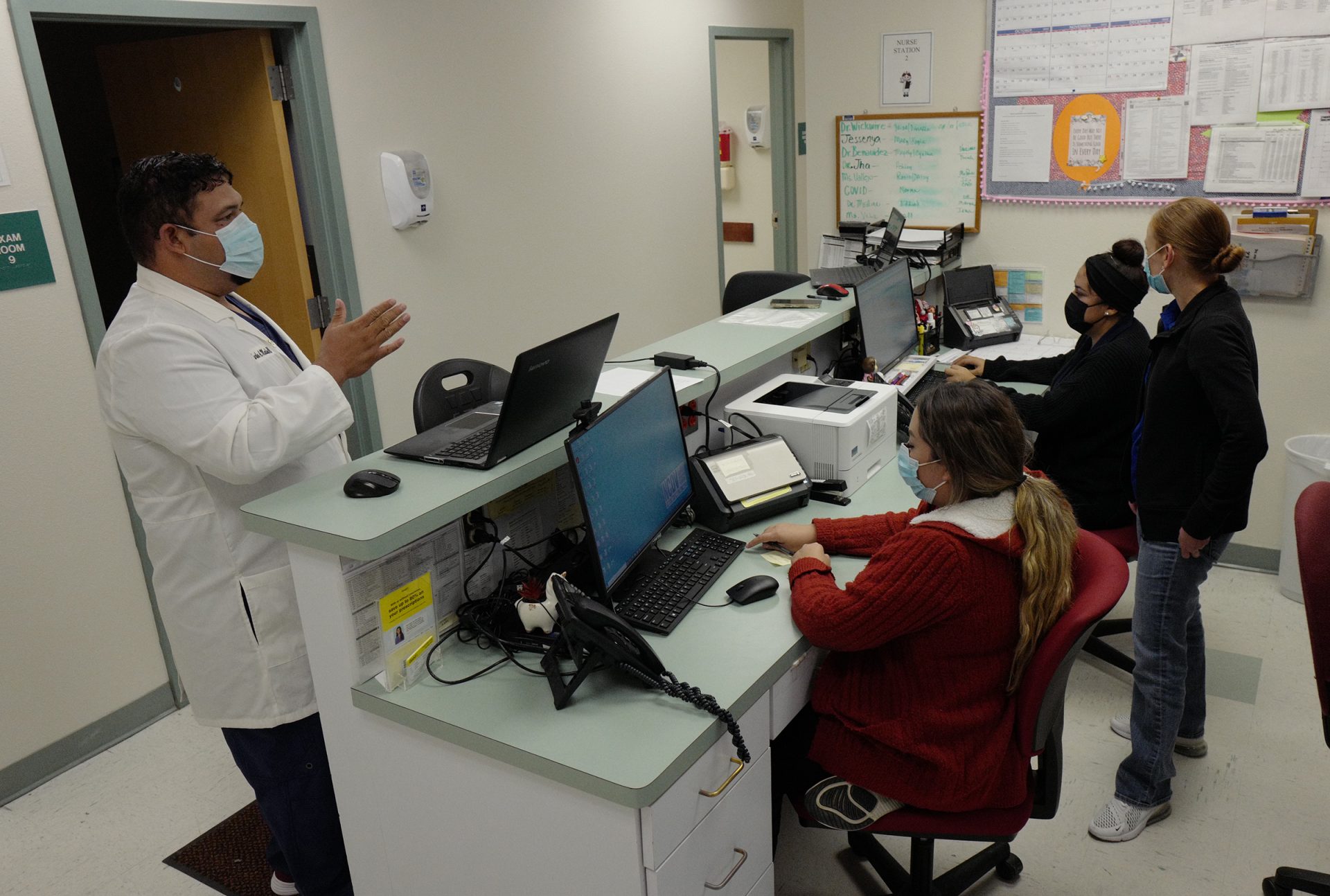SAN JUAN — COVID-19 cases and hospitalizations in the Rio Grande Valley remain relatively high with two of the four counties at a high COVID-19 community level, according to the Centers for Disease Control and Prevention.
While most cases are mild, people who are experiencing severe symptoms, or mild symptoms but have comorbidities, the antiviral drug Paxlovid is accessible in Hidalgo County.
As part of the “Test to Treat” initiative launched by the Biden administration in March, doctors, pharmacies, and health clinics are now able to provide potentially life-saving COVID-19 medication free of charge with a prescription.
However, there are just a few “One-Stop Test to Treat” locations nationwide where one can get tested, receive a prescription from a healthcare provider, and have their prescription filled. The only such location in the Valley is Nuestra Clinica Del Valle in San Juan.
“We’re unique in the sense of we vaccinate, we test, and we treat,” said Dr. Carlos Medina, the chief medical officer for Nuestra Clinica Del Valle, “and then for patients who have the longer COVID — like long-term COVID and long-term symptoms — we’re their primary care doctors too so we do basically the whole gamut of COVID treatment except going to the hospital.”
Medina said the clinic began receiving their first doses of Paxlovid in March or April and, currently, they order about 20 to 40 courses of Paxlovid approximately every two weeks.
He said one course of treatment with Paxlovid is three pills twice a day for five days for one person.
When screening for Paxlovid, Medina said they consider how long a person has been sick with COVID, the medications a person is taking, and their comorbidities.
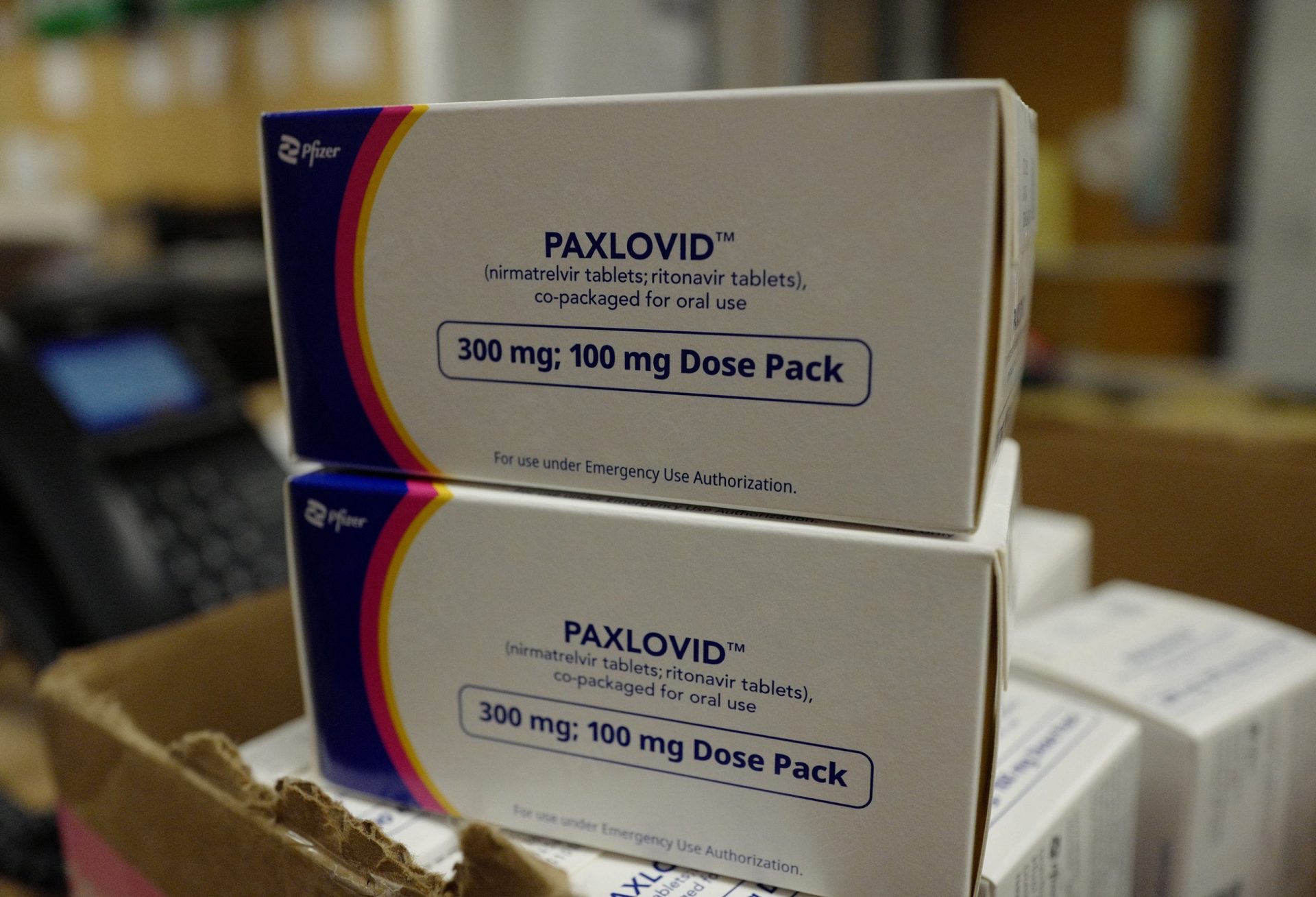
While Paxlovid is recommended more for people with comorbidities such as diabetes or hypertension, there are some underlying conditions that would disqualify some individuals from receiving the drug.
“Renal disease is a problem with Paxlovid since it’s excreted through the kidneys, so if they have severe renal disease they might not meet criteria for Paxlovid,” Medina said. “And even with some kidney disease, it changes your dosage for Paxlovid so we do need to know some medical history in order to do that.”
But Paxlovid may not be considered the saving grace it once was.
President Joe Biden famously experienced a rebound case of COVID-19 after having taken the antiviral drug.
Medina acknowledged rebound cases were a possibility and that he’s seen a few cases of it.
“Rebound only occurs when you do take the Paxlovid and it occurs when … the symptoms have been improving or have gone away and then you redevelop symptoms,” he said, explaining what it actually meant to rebound. “So if you had a cough that was persistent for the whole time, that’s not a rebound. A rebound would be let’s say you had cough and fever and those symptoms and they improve but then they come back after taking Paxlovid.”
“The issue really becomes that you are infectious again,” Medina said. “You can infect other people when you have the rebound so that becomes an issue and why you have to quarantine again.”
He said a rebound, if it occurs, will usually happen two to eight days after the completion of the course of Paxlovid and so the recommendation is, after the five days of quarantine, to wear a well-fitting mask for the next five days.
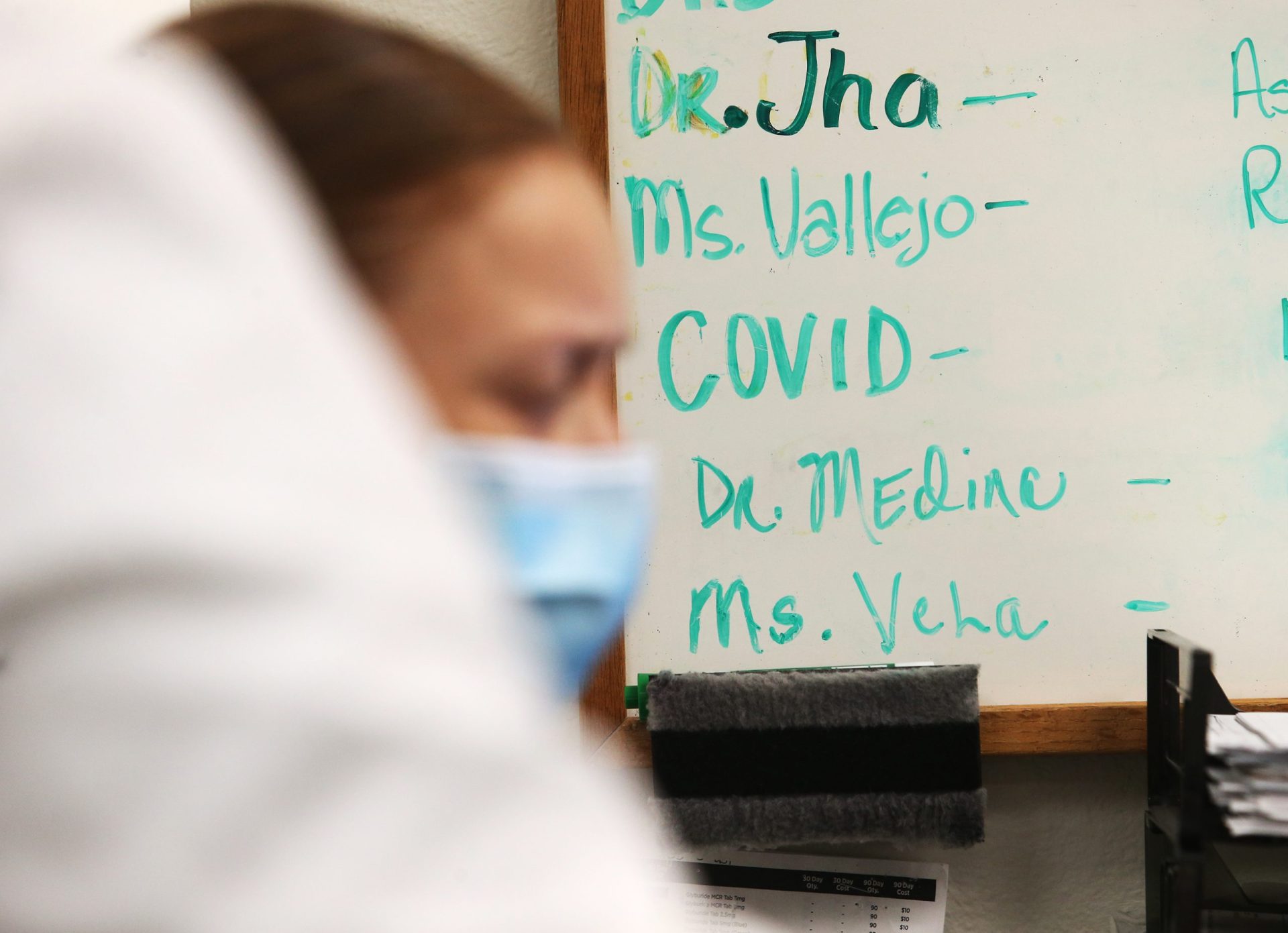
Nuestra Clinica has 11 different locations from Edcouch and Mercedes to Roma in Starr County. Only their San Juan clinic has the Paxlovid available but Medina said they can work with patients to send them the medication if necessary.
Both Starr and Hidalgo counties are at high COVID-19 community level which is based on hospital beds being used, hospital admissions, and the number of new COVID-19 cases in the area over the last seven days.
Cameron County is currently at a medium level while Willacy County is at a low level.
With regard to hospitalizations, 6.3% of all hospitalizations in the Lower Rio Grande Valley trauma service area are patients with COVID-19, according to data from the Texas Department of State Health Services, or DSHS.
That places the Valley in eighth place out of the 22 trauma service areas in the state in terms of COVID hospitalization percentage.
When hospitalizations were at their peak in the Valley in July 2020, patients with COVID made up nearly 75% of all hospitalizations, according to DSHS.
“A lot of people were a lot sicker, a lot more shortness of breath and people were going to the hospital,” Medina said. “I have seen far less people go to the hospital specifically just for COVID.”
Nuestra Clinica Del Valle serves everybody but as a clinic that will treat patients regardless of their ability to pay, they tend to see a lot of uninsured patients.
They also see a lot of people with chronic illnesses and serve as their primary care providers because those individuals don’t have the ability to go anywhere else either because of lack of funds or lack of ability to get around.
“Especially early on in COVID, that was a big issue, they were getting hospitalized,” Medina said. “The people who did get sick would get hospitalized and they were at high risk for going to the hospital and dying in the hospital because they were just at high risk.”
“I’ve seen that risk decrease over a period of time just because of the natural progression of the virus,” he added, “so luckily, more people are getting infected, but less people are getting severely sick which is a good thing.”

